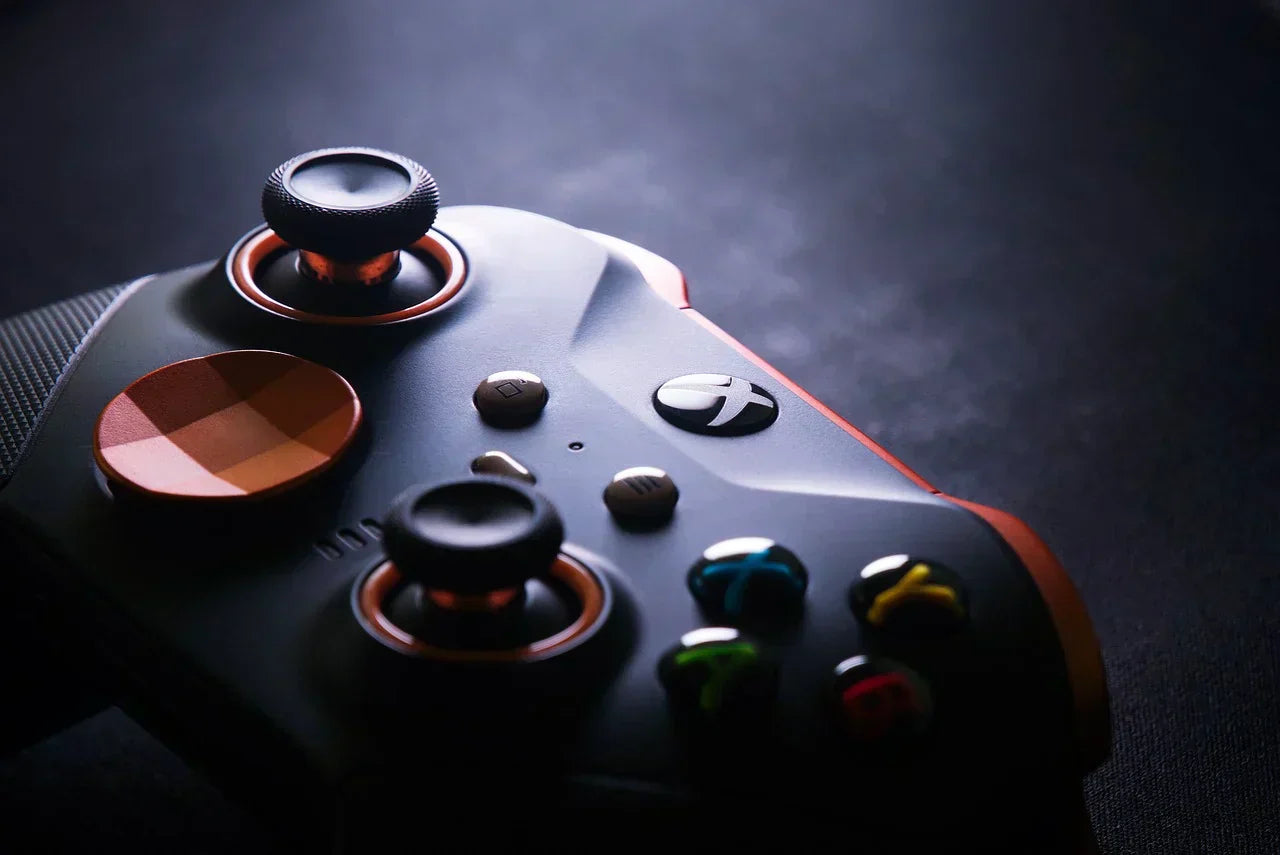Gaming controllers are more than just tools; they’re extensions of a gamer’s personality. With the rise of gaming as a cultural phenomenon, customizing controllers has become a popular way to make a statement, stand out, or simply enhance the gaming experience. Among the many methods of customization, painting a controller offers unmatched versatility and creativity.
Personalized controllers not only look visually stunning but also offer practical benefits. A well-painted controller can resist wear and tear, maintaining its unique design for years. Whether you’re a casual gamer or a pro, painting your controller can transform it into a one-of-a-kind piece of art that reflects your style and passion.
Materials Needed
Before diving into the customization process, it's essential to gather the right tools and materials. Using high-quality supplies ensures your design is vibrant, durable, and long-lasting. Here's a comprehensive list of what you'll need:
-
Paints
-
Acrylic paints formulated for plastic surfaces are ideal. They provide excellent adhesion, vibrant colors, and resistance to cracking or peeling.
-
Specialty paints, such as metallic, pearlescent, or glow-in-the-dark options, add unique effects to your design.
-
Primer
-
A plastic-compatible primer is crucial for preparing the controller's surface. It ensures the paint adheres evenly and lasts longer.
-
Clear Coat
-
A clear coat acts as a protective barrier, sealing your design and adding a glossy or matte finish.
-
Brushes
-
Use a variety of brushes, including fine-tipped ones for detailed work and flat brushes for broader areas.
-
Essential for covering parts of the controller that you don’t want to paint, such as buttons, triggers, and ports.
-
Sandpaper
-
Fine-grit sandpaper smooths the controller’s surface and creates a texture for better paint adhesion.
-
Miscellaneous Tools
-
Gloves to protect your hands.
-
A lint-free cloth for cleaning.
-
A workspace setup with proper ventilation to ensure safety.
By investing in these materials, you can ensure a professional finish for your custom controller designs.
Preparation Steps
Proper preparation is key to achieving a long-lasting and flawless design. Skipping these steps can lead to uneven paint, peeling, or reduced durability. Follow these steps for the best results when painting a controller:
-
Disassemble the Controller
-
Use a screwdriver to remove all screws and carefully take apart the controller. Remove buttons, joysticks, and other removable components. This prevents paint from interfering with their functionality.
-
Keep all parts organized in separate compartments to ensure easy reassembly.
-
Clean the Surface
-
Wipe down the controller shell with a lint-free cloth to remove dust, oils, and dirt. Use isopropyl alcohol for deeper cleaning to eliminate residue that could prevent the paint from adhering properly.
-
Sand the Plastic
-
Lightly sand the surface with fine-grit sandpaper. This step creates a slightly rough texture that helps the primer stick to the plastic.
-
After sanding, wipe the surface again to remove any particles.
-
Mask Areas You Don’t Want to Paint
-
Use masking tape to cover areas like ports, buttons, and inner components. Precision in masking ensures clean lines and protects sensitive parts from accidental paint splatters.
Proper preparation not only ensures a clean painting surface but also sets the stage for a design that will stand the test of time.
Design and Planning
A well-thought-out design can elevate your personalized controller to the next level. Planning your design helps you visualize the final result and reduces the chances of mistakes during the painting process.
-
Choose a Theme
-
Think about what inspires you. Popular themes include game logos, abstract patterns, cosmic designs, and character art.
-
Incorporate colors and patterns that align with your gaming setup for a cohesive look.
-
Create a Sketch
-
Start by sketching your design on paper. This allows you to experiment with placement and proportions without committing to paint.
-
For complex patterns, consider using digital tools to visualize the design.
-
Decide on Techniques
-
Freehand Painting: Perfect for those confident in their artistic abilities.
-
Stencils and Decals: Ideal for achieving precise patterns and symmetrical designs.
-
Blending and Layering: Adds depth and dimension to the artwork.
-
Plan Placement
-
Consider ergonomics. Place intricate designs in areas that won’t experience heavy wear, such as the back or sides.
Taking time to design and plan ensures your personalized controller truly reflects your creativity.
Painting Process
The painting process is where your vision comes to life. Patience and attention to detail are key to achieving a professional finish. Follow this step-by-step guide:
-
Apply Primer
-
Evenly coat the controller shell with a plastic-compatible primer. Use light, even sprays or brushstrokes to avoid drips.
-
Allow the primer to dry completely before moving on.
-
Paint the Base Layer
-
Start with the primary color of your design. Apply thin, even layers, letting each layer dry before adding the next.
-
Thin coats prevent uneven textures and reduce the risk of paint peeling.
-
Add Design Details
-
Use fine-tipped brushes for intricate details like logos, patterns, or shading.
-
Experiment with techniques like blending colors for gradients or using stencils for sharp edges.
-
Layer and Blend
-
Build up the design gradually. Layering adds vibrancy, while blending creates smooth transitions between colors.
-
Dry Between Layers
-
Allow each coat to dry thoroughly before applying the next to prevent smudging or mixing.
By taking your time during the painting process, you can ensure a flawless design that captures attention.
Drying and Curing
Proper drying ensures your design stays intact. Here’s how to dry and cure your painted gaming controller effectively:
-
Natural Drying:
-
Place the controller in a dust-free area and let it dry naturally for 24–48 hours.
-
Use a Hairdryer:
-
A hairdryer on a low setting can speed up the process without overheating the paint.
-
Curing Time:
-
Allow the paint to cure for at least a week before applying heavy use. This step enhances durability.
Application of Clear Coat
The clear coat is the finishing touch that protects your design. Here’s how to apply it:
-
Choose a High-Quality Clear Coat:
-
Opt for one designed for plastic surfaces to prevent cracking or peeling.
-
Apply Thin Coats:
-
Spray or brush on thin, even layers. Multiple light coats are better than one heavy coat.
-
Drying:
-
Allow each coat to dry before adding the next. Keep the controller in a dust-free environment during this stage.
-
Inspect the Finish:
-
Check for even coverage and address any uneven areas with additional coats.
Reassembly and Testing
Once the paint and clear coat are fully cured, it’s time to reassemble and test your controller:
-
Reassemble Carefully:
-
Reattach all parts, ensuring they fit snugly. Be gentle to avoid scratching the paint.
-
Test Functionality:
-
Check buttons, joysticks, and triggers to ensure everything works smoothly.
-
Final Touches:
-
Wipe the controller with a lint-free cloth to remove fingerprints or dust.
Maintenance Tips
To keep your personalized controller looking and working great:
-
Handle with Care:
-
Avoid dropping or exposing the controller to excessive heat or moisture.
-
Clean Gently:
-
Use a damp cloth to wipe the surface. Avoid harsh chemicals that may damage the paint.
-
Store Properly:
-
Store the controller in a protective case when not in use.
Showcase and Inspiration
Need inspiration for your design? Here are some ideas:
-
Minimalist Elegance: A clean, two-tone design with subtle accents.
-
Bold and Vibrant: Eye-catching colors with geometric patterns.
-
Game-Inspired Themes: Designs featuring iconic game logos or characters.
Each design is a testament to creativity, showcasing how a personalized controller can elevate your gaming setup.
(Source: @paintplaybychey)
Painting a controller is a creative way to personalize your gaming gear and make it truly unique. From selecting the right materials to applying intricate designs, every step plays a crucial role in achieving a stunning final result. By following these steps, you can craft a personalized controller that’s as unique as your gaming style.
Angelus Direct offers premium materials perfect for controller customization. Angelus Direct’s range of paints and finishes ensures professional results that last.
FAQs
1. What type of paint works best for gaming controllers?
Acrylic paints designed for plastics are ideal. They provide durability and vibrant colors without cracking.
2. Do I need to sand my controller before painting?
Yes, sanding creates a textured surface for the primer to adhere to, ensuring better paint adhesion.
3. How do I protect my design from wear and tear?
Applying a clear coat provides a protective layer that seals the paint and adds a glossy finish.
4. Can I use decals instead of painting?
Yes, decals are a great alternative for intricate designs. They can be combined with paint for added creativity.
5. Where can I find high-quality painting supplies?
Angelus Direct offers top-tier paints, primers, and clear coats suitable for controller customization, ensuring durable and vibrant designs.

